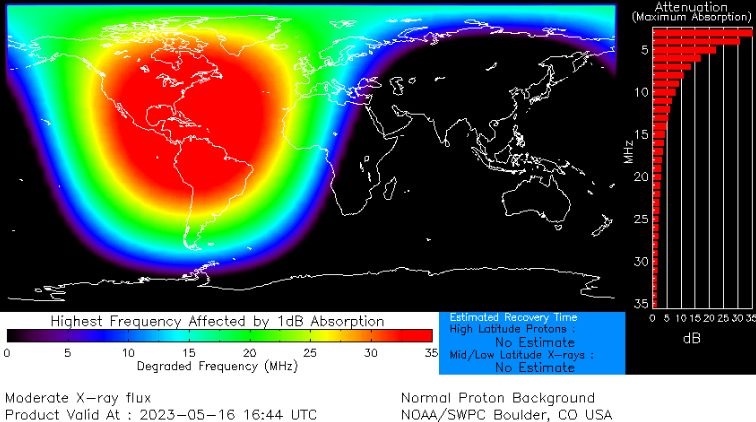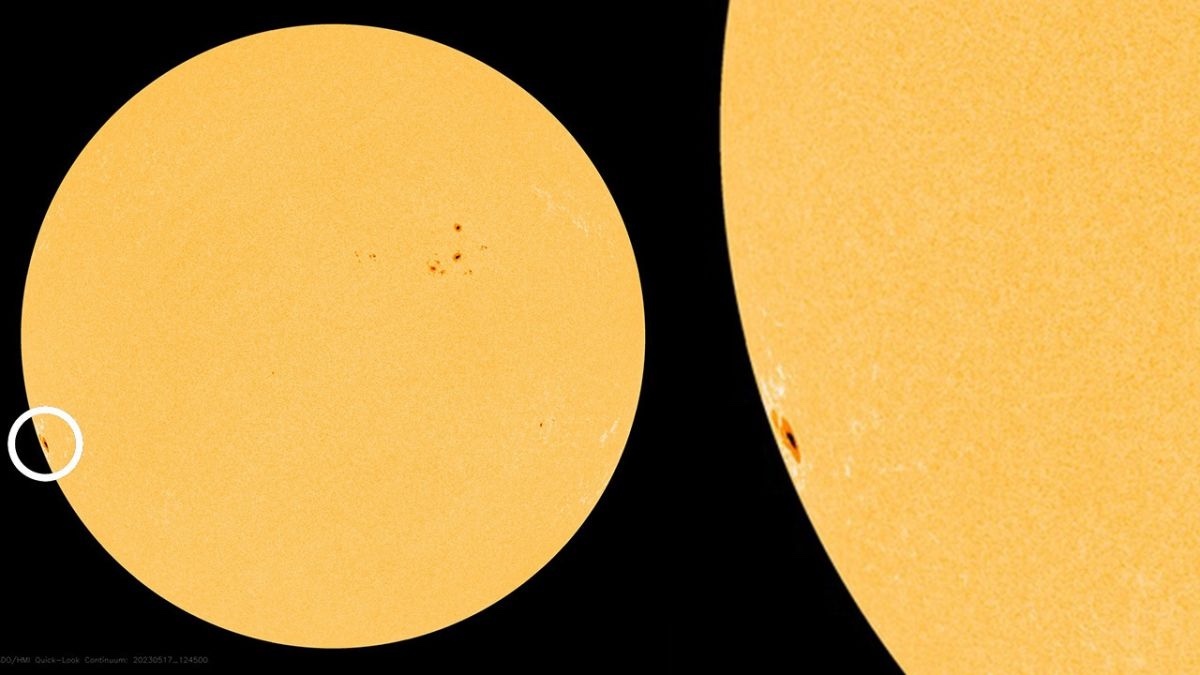19.05.2023
The sunspot will turn to directly face Earth this weekend.
A covert sunspot partially hidden behind the sun's southeast limb unleashed a powerful M9.6 class solar flare on May 16 at 12:43 p.m. EDT (1643 GMT).
Though the sunspot wasn't facing Earth, the effects of the eruption were felt as the radiation from the event triggered a moderate radio blackout over parts of North America, Central America and South America according to NOAA's Space Weather Prediction Center(opens in new tab).
Due to the sun's rotation, the secretive sunspot will soon come into Earth-view and by the weekend it will be directly facing us.

Solar flares are caused when magnetic energy builds up in the solar atmosphere and is released in an intense burst of electromagnetic radiation. They are categorized by size into lettered groups(opens in new tab), with X-class being the most powerful. Then there are M-class flares that are 10 times smaller than X-class flares, then C-class, B-class and finally A-class flares which are too weak to significantly affect Earth.
Within each class, numbers from 1 to 10 (and beyond, for X-class flares) denote a flare's relative strength. The recent flare clocked in at M9.6; if it were just 4% brighter it would have been classified as an X-flare. According to SpaceWeather.com(opens in new tab), it is likely that it was an X-flare partially eclipsed by the edge of the sun and so only registered as an M-class.

An image of the sun produced by NASA's Solar Dynamics Observatory (SDO) showing the 'hidden' sunspot near the star's southeastern limb. (Image credit: NASA/SDO
Though it was obscured behind the solar disk, the M-flare still caused extensive radio blackouts, due to the strong pulse of X-rays and extreme ultraviolet radiation sent barrelling toward Earth by the explosive flare. Traveling at the speed of light, the radiation reached Earth in just over eight minutes and ionized the upper layer of Earth's atmosphere — the thermosphere — triggering shortwave radio blackouts on the sun-lit portion of Earth at the time.
Solar activity is on the rise as part of solar cycle 25, which scientists predict will peak in 2025. To find out if there is a solar flare today and to keep up with the latest space weather findings, visit the National Oceanic and Atmospheric Administration's Space Weather Prediction Center(opens in new tab) to see the most recent solar X-ray data from the agency's GOES weather satellites that perch over the eastern and western U.S.
Quelle: SC

